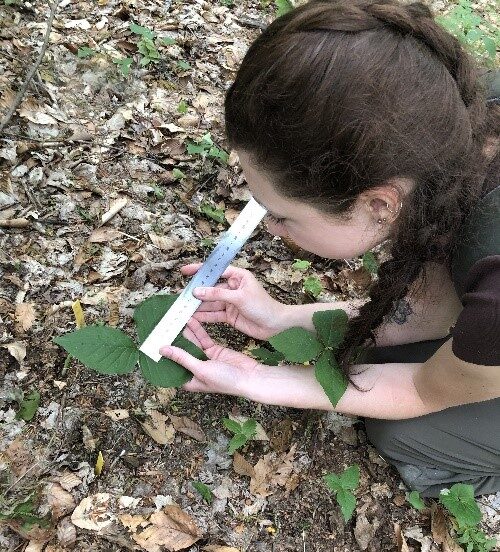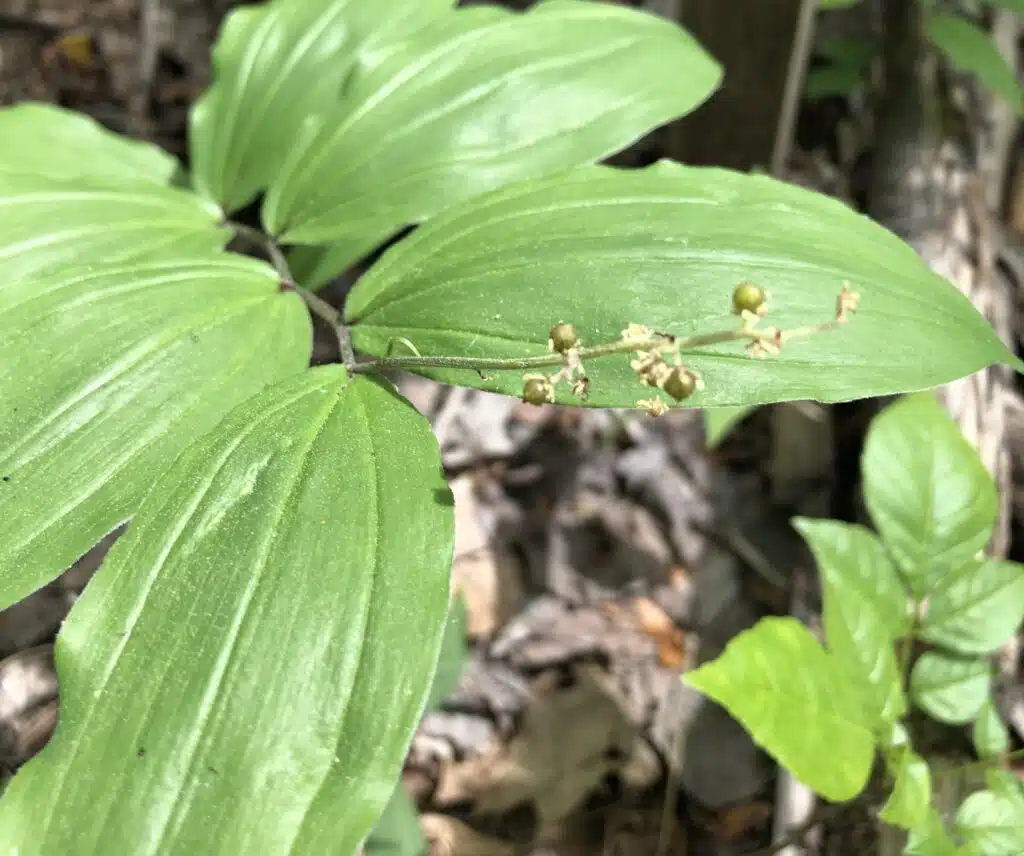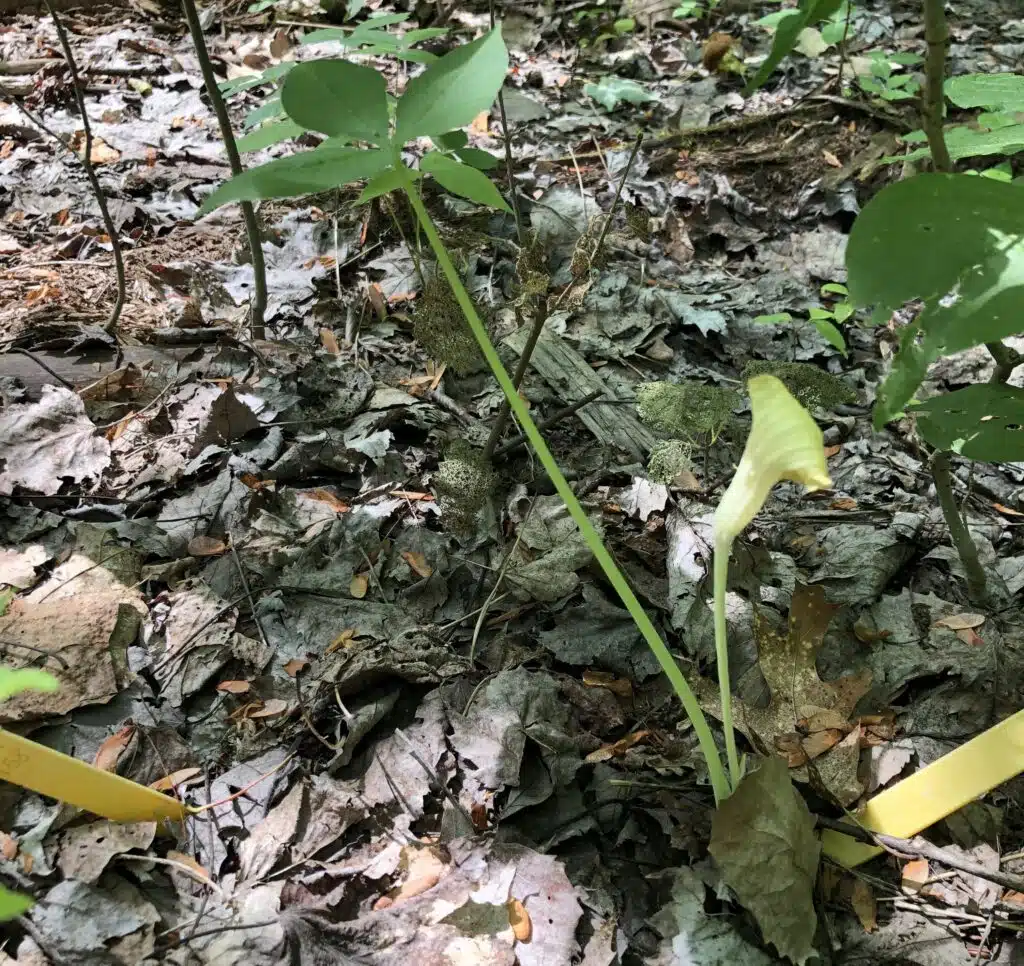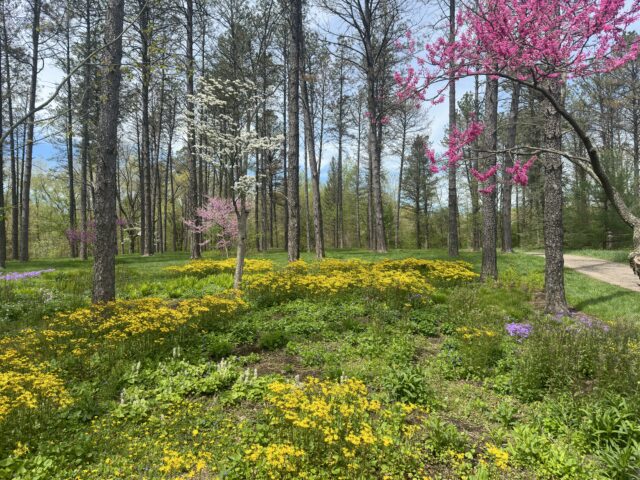Restoring Wildflowers to the Forests: Insights from a Soil Fungi Experiment
September 15, 2023

I’d found myself kneeling in the leaf litter, surrounded by forest, my fingers carefully arranging a leaflet of the small plant before me, my other hand adjusting a ruler to measure its length and width. It wasn’t the first time: I’d done this at seven other locations around Stebbins Gulch, a natural area owned by Holden Forests & Gardens.
The plants I’m measuring are a part of a long-term experiment set up by Holden’s Soil Ecology Lab in 2018 to investigate the impact of agricultural land use on the organisms that live in the soil. Four of the sites had been small farms until the 1930s, when they were abandoned and slowly reclaimed by forest. The other four sites had always remained forested, and today are of higher quality. In each of these places, we planted the native wildflowers Jack-in-the-pulpit and false Solomon’s seal, which we know form healthy associations with fungi that live in the soil.

Underground Fungi for Forest Health
If you’ve been reading the Science on Friday blogs this month, you’ll know that these fungi – arbuscular mycorrhizae – help promote plant growth and establishment by providing it with nutrients in exchange for some of the sugars the plant made through photosynthesis. Many species of plants rely on these underground fungal symbionts, so they’re important for the health of the whole ecosystem. That’s why it’s crucial to consider fungi like these when restoring disturbed environments.
Across each of our eight locations in Stebbins Gulch, we set up an experiment to test three different soil scenarios to see how each would affect the wildflowers. The first were controls, growing in the naturally occurring soil at each location. The second were treated with commercially produced mycorrhizal inoculum. And for the last group, in the low-quality forest plots only, we treated them with soil from the high-quality sites – a form of native inoculum. We then measured the growth of the plants every year, or in some cases every-other year, to see how the inoculation treatments impacted their growth.
A Closer Look at Wildflower Roots
To complement our field study, we also grew Jack-in-the-pulpit and false Solomon’s seal in pots in the greenhouse, using soil collected from each of the field sites. We mimicked each of our soil treatments and again let the wildflowers grow. But by growing them in pots, we were able to harvest their roots for additional study.
This was my job as an intern: DNA analysis of these roots to determine the amount of arbuscular mycorrhizal fungi that had colonized them. I prepared the harvest roots for DNA extraction, which involved some careful maneuvering of liquid nitrogen into test tubes, extracted the DNA, and then used a common lab technique called PCR to quantify the amount of fungi in the root samples.


Relationship Status: It’s Complicated
Unsurprisingly, we had expected the plants in the high-quality forests to experience more growth. This prediction was bolstered by our greenhouse experiment, which showed that plants growing in higher-quality forest soils tend to have greater levels of mycorrhizal fungi colonization.
But in the field, the plants growing in the low-quality forests actually did better than the plants in the high-quality forests this growing season. They boasted a greater number of stems, a higher average stem height, and, for false Solomon’s seal, a higher average leaf area.
This might seem counterintuitive, but it’s important to remember that this relationship does come at a cost. The plant receives nutrients, but it must give up some of its sugars. In this case, more fungi may actually be limiting the plant’s growth at the high-quality sites.
Other possible explanations could be that low-quality forests have more light gaps since they do not have as many mature trees, thereby providing the understory wildflowers with more sunlight. Or, perhaps there are still nutrients leftover from the historical agriculture that the plants are taking up, making a relationship with mycorrhizal fungi unnecessary and even undesirable.
Whatever the reason, it seems that once planted, the wildflowers in the low-quality plots are doing well on their own, despite, as we’ve seen, having trouble spreading to these sites in the first place. It’s encouraging that simply reintroducing these wildflowers may be sufficient for understory community restoration.
All in all, what’s most striking is that nearly one hundred years after abandonment, this land is still recovering from agricultural use. As we now consider how to go about implementing restoration efforts, we must remember to take the whole picture into account and think more than surface deep.











